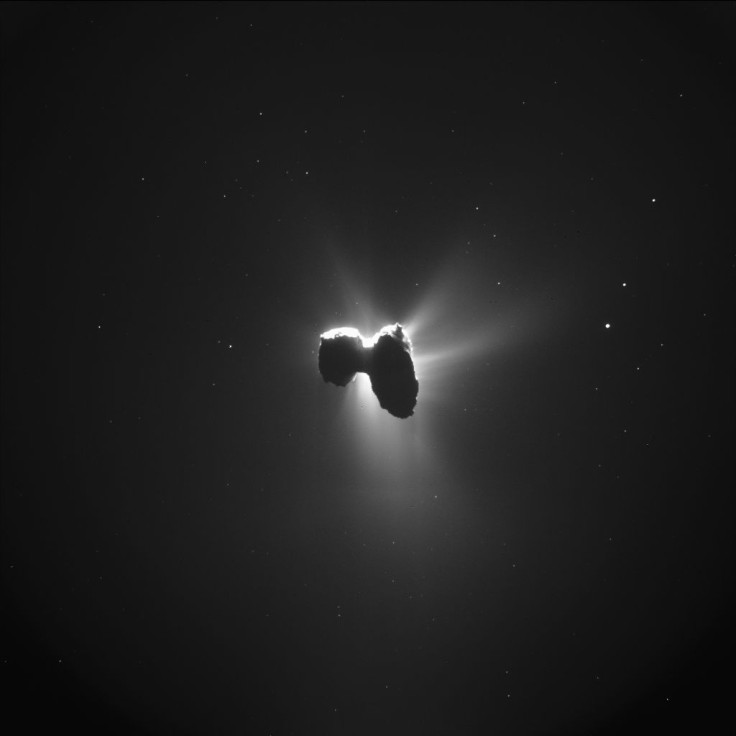Rosetta Beams Back Stunning New Image Of Backlit Comet 67P

Humanity’s love affair with the comet 67P/Churyumov-Gerasimenko, which ran into a speed bump with the untimely demise of the European Space Agency’s Philae lander, is still going strong. On Friday, the ESA released a breathtaking photo of the rubber duck-shaped comet, taken from a distance of just over 200 miles.
The photograph, taken on March 27 by instruments on board Philae’s mothership Rosetta, capture the moment when the Sun, the comet and the spacecraft are perfectly aligned, resulting in a gorgeous backlit image of 67P.
“In this configuration, the nucleus appears backlit, with only a few portions of the illuminated surface visible from this view — in the upper and upper right part of the nucleus,” the ESA said in a statement accompanying the photograph. “The image reveals the bright environment of the comet, displaying beautiful outflows of activity streaming away from the nucleus in various directions. It is interesting to note hints of the shadow cast by the nucleus on the coma below it, as well as a number of background stars sprinkled across the image.”
A coma is the fuzzy, nebulous envelope of dust and gas that usually surround a comet’s nucleus. The shape and size of the coma vary depending on the comet’s composition and its distance from the Sun.
Rosetta, which has been stalking the comet since the summer of 2014, was launched in 2004 with an aim to further our understanding of the conditions of the early solar system. The mission made history by landing the first probe on the surface of a comet. However, the lander — Philae — failed to anchor itself to the comet’s surface and eventually lost contact with the mothership.
Rosetta, meanwhile, has continued to orbit the comet, beaming back invaluable data about the comet’s surprisingly complex chemistry. It will continue to do so until it crashes into the icy ball in September 2016, when 67P would already be on its way back to deep space.
© Copyright IBTimes 2025. All rights reserved.






















